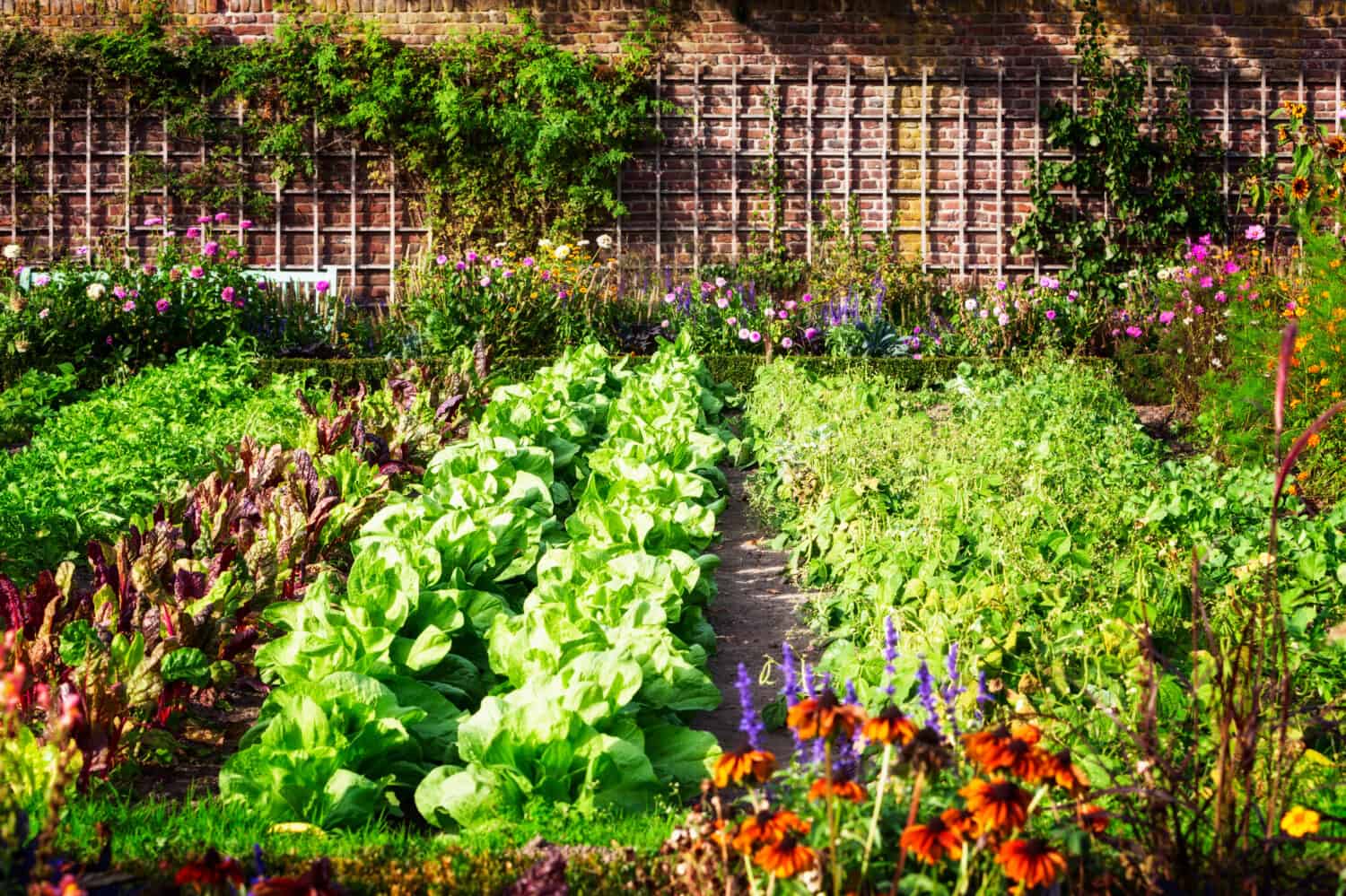Starting work on your garden doesn’t have to wait for spring. If you want a springtime garden with blooming flowers and ripe vegetables, your plans must start in December. If you plant bulbs now, you can see tulips, crocus, or hyacinths bloom by March. Even existing gardens can flourish with a few improvements in the winter. Here are a few tips to make your springtime garden flourish.
1. Do A Soil Test
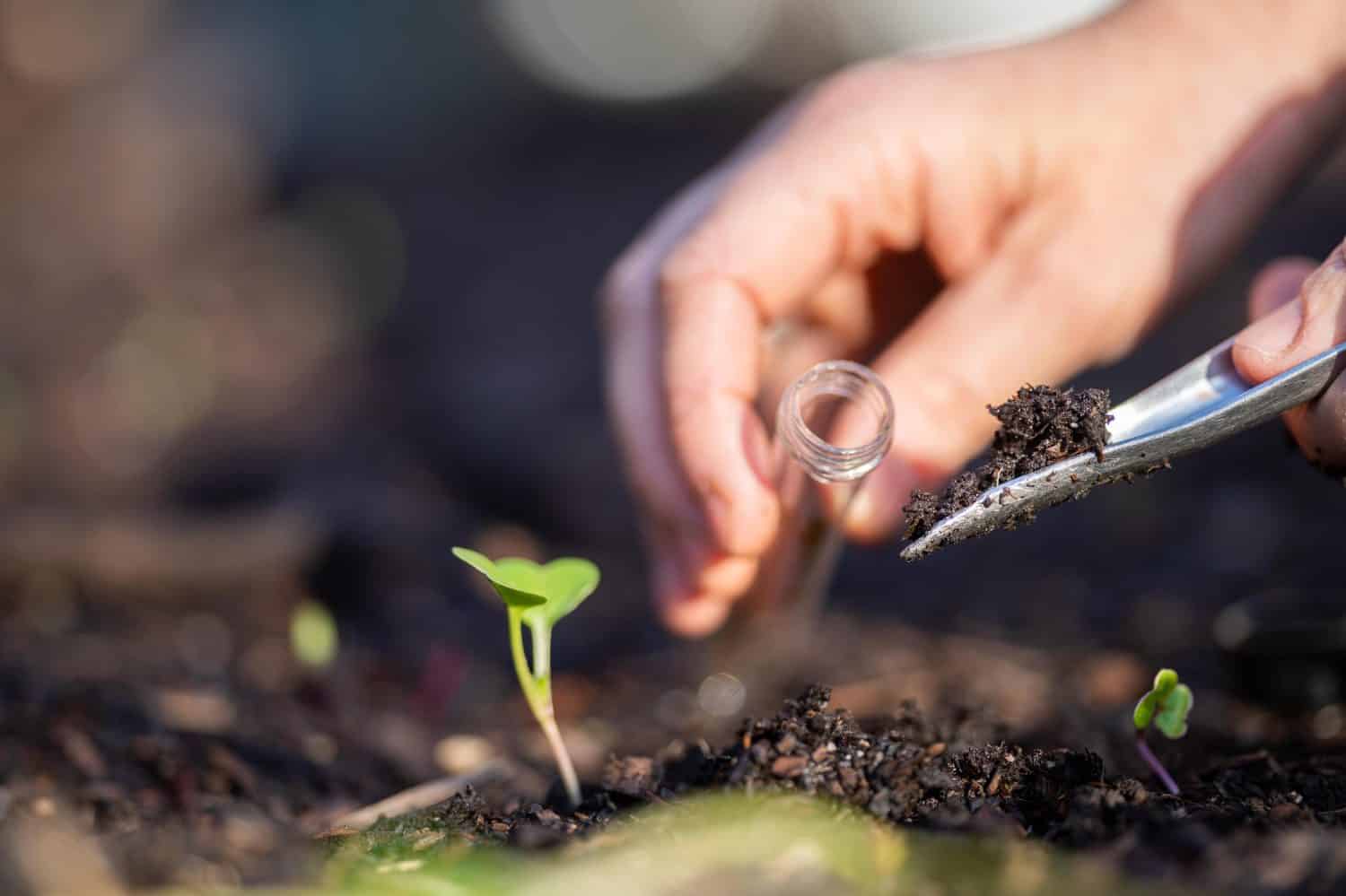
Understanding what is in your soil tells you what you need to change and improve before planting.
©William Edge/Shutterstock.com
To ensure your garden is properly prepared for the spring, you must start with a soil test. A soil test tells you about all of the minerals and materials in your soil. If you need to make changes to balance pH levels, it is best to know beforehand rather than when you are ready to plant later.
2. Harvest Winter Vegetables
If you already have a garden, it may be time to harvest the winter vegetables you planted in the fall. Your garden needs a clear space to prepare for spring. Harvesting the crops on time clears the area you’ll need to prepare for springtime. However, leaving them unharvested will put your garden space at risk of decomposition.
3. Pull Out Debris And Dead Plants (But Not All Of It!)
As you prepare your garden space, you are likely not the first (or last) to use it. As you prepare the soil, pull out any previous debris from the crops and other plants that were there before. You may encounter some diseased plants, which should not be used as compost. Instead of digging down to the root, pull what comes out naturally. Leaving those ends behind provides food for the healthy bacteria your soil needs to nourish future plants.
4. Nourish Your Soil
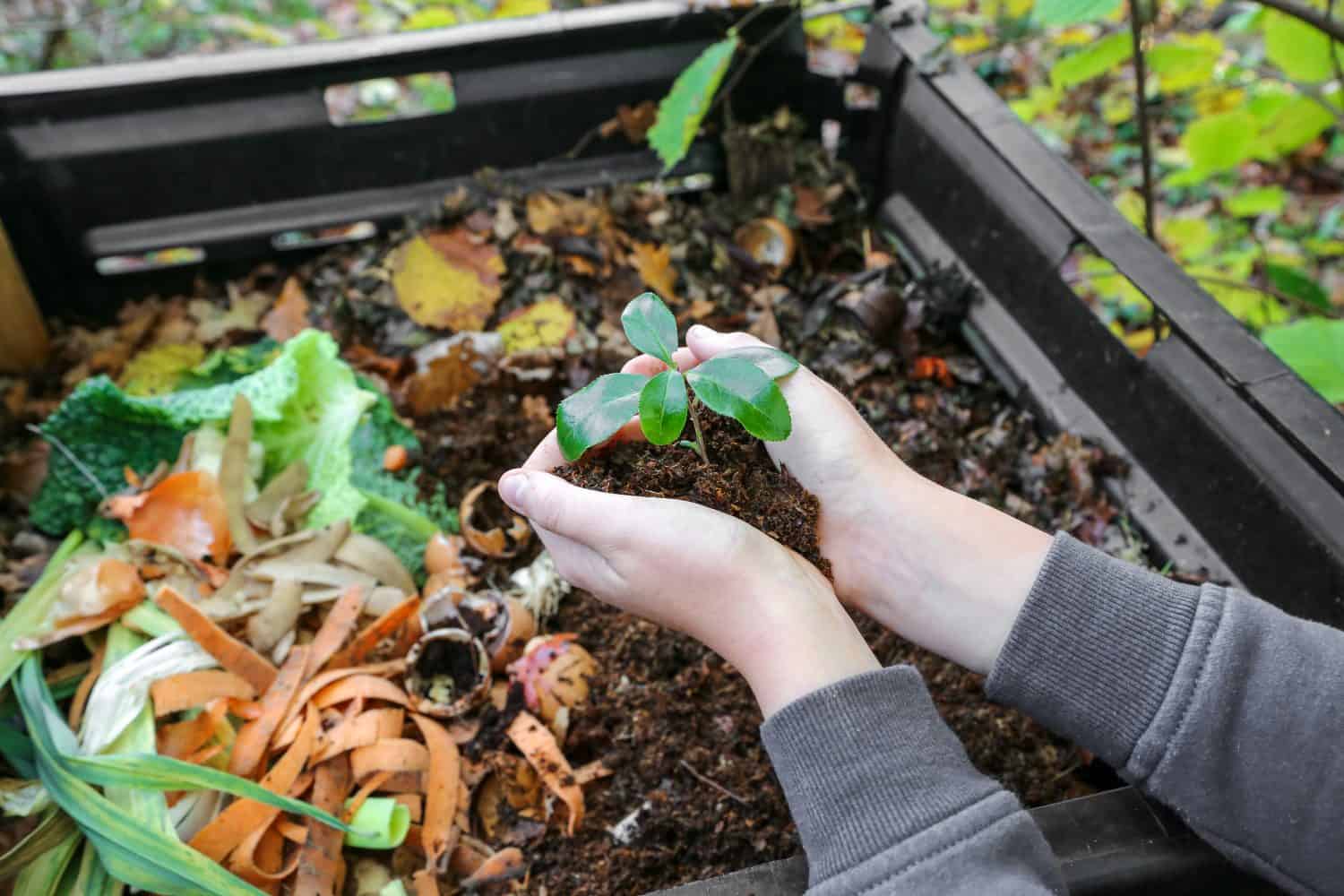
Whether you make your compost or purchase it, a thick 4-inch layer over your garden bed works wonders for springtime gardening.
©Jerome.Romme/Shutterstock.com
Taking care of the soil you will use in the spring is important for any garden. Add some compost, working a thick layer into the soil with a digging fork. Some people use mulch to protect their plants through the colder months, protecting them from erosion and freezing. Adding manure during December gives plenty of time to compost with the rest of the garden.
5. Introduce A Cover Crop
Cover crops, like clover or red wheat, draw nutrients upwards from the soil. It also helps remove excess water and restore the nitrogen in the soil. It would be best if you planted these crops before December weather gets too cold, which means that northern gardeners need to prepare in November or even October instead.
6. Prune Your Fruit Trees And Other Plants
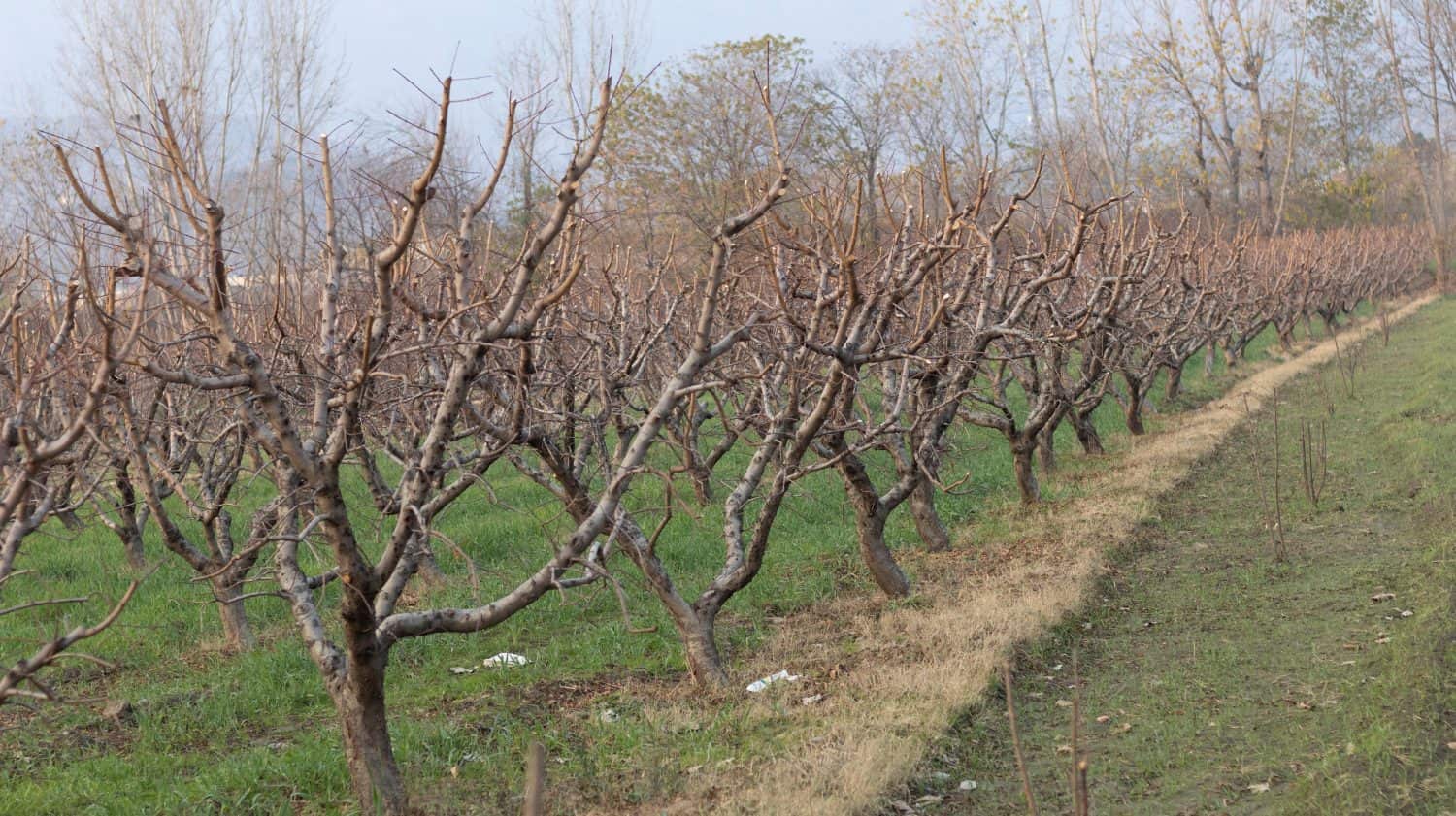
Taking care of your fruit trees in the winter sets you up for an abundant harvest in warmer weather.
©GreenThumbShots/Shutterstock.com
Having a fruit tree in the garden means winter is the perfect time for pruning. Wisteria is one of the most common trees that need winter pruning, though some fruit trees, Japanese maple trees, and roses all need a little trim. They should not be pruned ahead of winter, but they can wait for pruning until warmer weather if necessary.
7. Protect Produce And Herbs That Survive Winter Frosts
For people who already have their garden set up, some produce and herbs are strong enough to survive the most brisk winters. However, vegetables like arugula or cauliflower die without protection. Potatoes are one of the root vegetables that withstand the temperature changes, but they can’t be exposed to the surface, or they’ll spoil.
8. Bring In Your Small Herbs
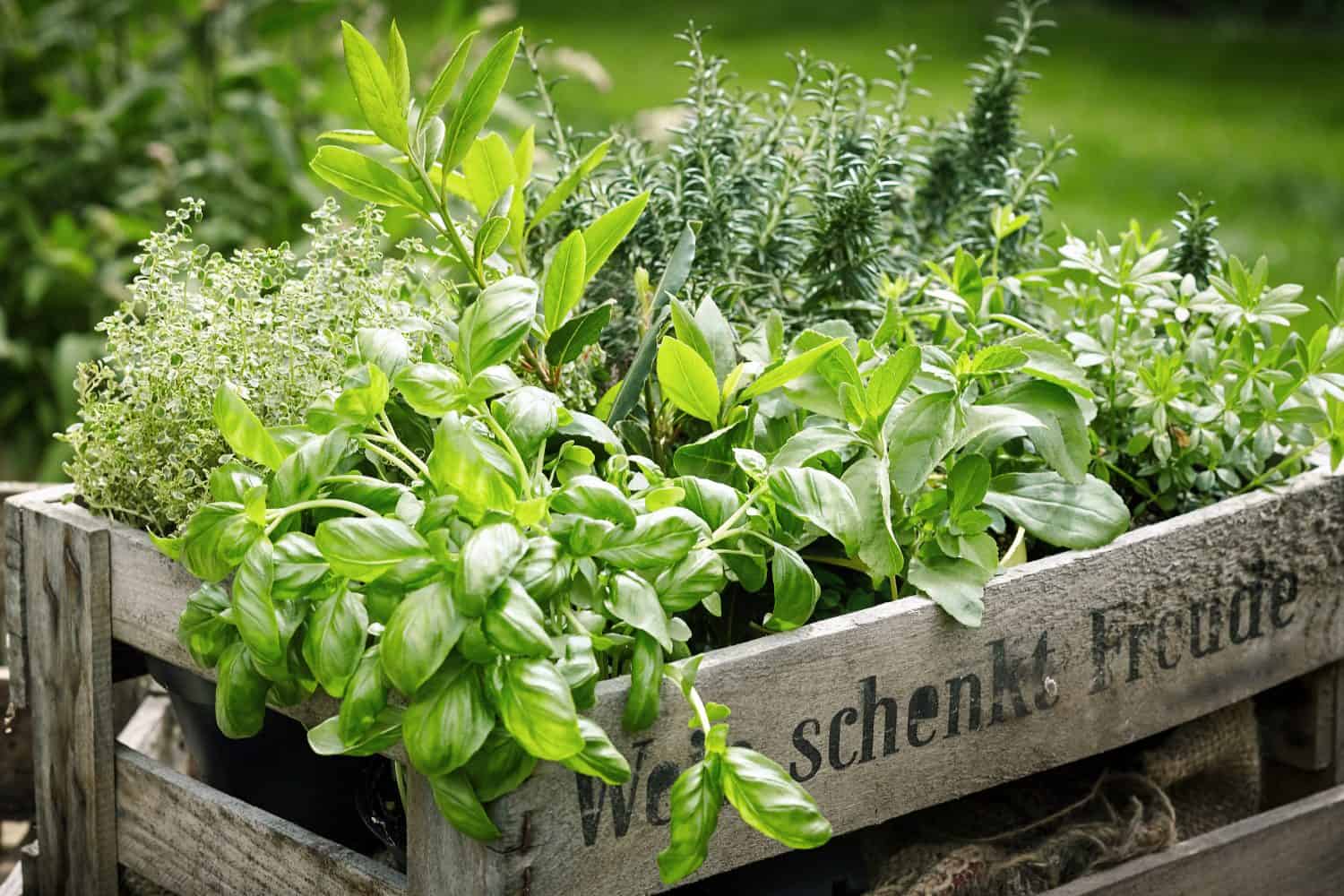
The leaves of most herbs are unable to handle the frosty winter weather, so bring them indoors to keep growing.
©stockcreations/Shutterstock.com
If you have small herbs in your garden, they won’t make it through the winter either. Basil is one of the many annual herbs that can’t handle the cold weather. Protect them by bringing them in to allow continued growth. Oregano is a little more robust and hardy, but a straw mulch protects it when temperatures drop.
9. Plant Springtime Bulbs
Planting is one of the best parts of preparing your garden for spring. While much of the work in your garden has to focus on preparing soil and protecting other plants, this time is also perfect for planting tulips, pansies, and other flowers with bulbs.
10. Control Your Pests
When you go through all the hard work to get your soil ready and protect growing plants, the last thing you want is to fall victim to unwanted pests. Protecting your garden now means you won’t have to worry about an infestation later. While you may need pesticides for more aggressive insects, preparing in advance prevents unwanted invasions.
11. Cover Your Garden Beds Until Spring
With all the pest control efforts and tending to the soil, one of the easiest ways to keep your garden safe through December is to cover it up. Vegetable gardens don’t need much more than a layer of cardboard or a similar barrier. Some gardening centers also offer netting that protects plants during this time of year.
12. Winterize Your Roses
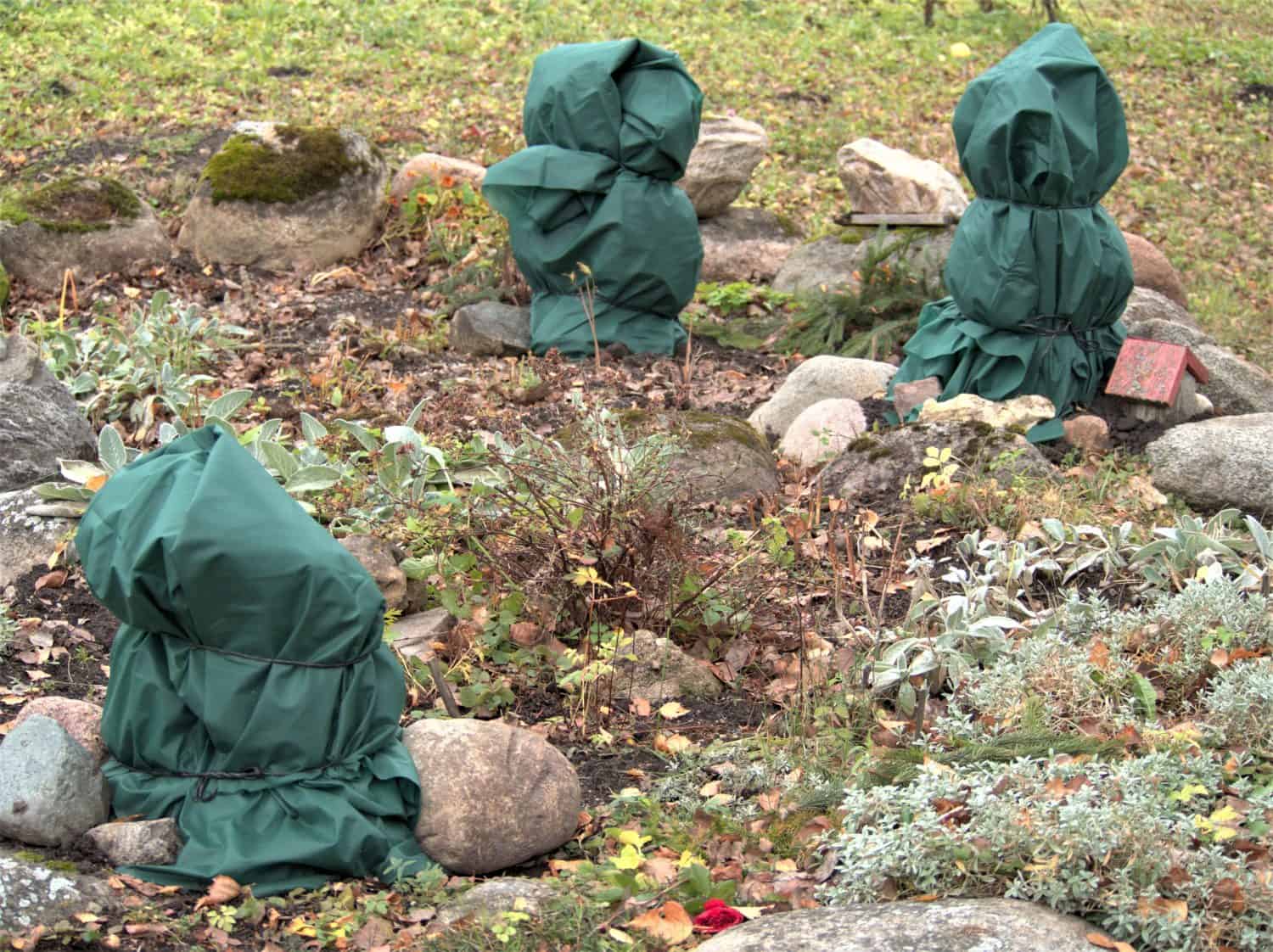
Covering your rose bush protects it from frost, which weakens stems and destroys soft petals.
©GS23/Shutterstock.com
Like your fruit trees, any roses you’ve planted also need winterization. Using mulch or compost up the stem protects their main source of nutrients. If temperatures drop below freezing in your area, consider enclosing them with chopped leaves, compost, and other protective ingredients.
13. Turn Off Any Irrigation Systems
None of the plants you care for through the winter will need watering, and an empty garden has nothing to nourish, so you have to turn off your home’s irrigation system. This system releases water into your garden, causing severe damage to anything you may have planted for the spring.
14. Clean Your Tools
Now that your entire garden is ready clean up your tools. While treating the garden is essential for the spring, your tools are just as important to the harvest and bloom in the spring. Cleaning them reduces the risk of rust, though some people also swear by oiling the metal to protect them. This is also a good time to clean up any areas around your garden or the pots you want to use when the weather gets warmer.
15. Sprout Seeds Indoors For Springtime Planting

These small seedlings should be ready to plant in the spring if you prepare them in December.
©salarko/Shutterstock.com
Unless you have a warm greenhouse, sprouting seeds is the best way to get your greens. Use a glass jar for a homemade planter, or find a tray that lets you sprout multiple seeds simultaneously.
December Tips for Springtime Gardens: A Summary
| 1 | Get a soil test. |
| 2 | Harvest winter vegetables still in the garden. |
| 3 | Remove most of the dead plant debris. |
| 4 | Add compost to nourish the soil. |
| 5 | Add a cover crop. |
| 6 | Prune your trees. |
| 7 | Protect produce that can’t survive the winter. |
| 8 | Bring herbs indoors. |
| 9 | Plant bulbs. |
| 10 | Treat your garden with pest control formulas. |
| 11 | Cover the garden bed. |
| 12 | Winterize your roses. |
| 13 | Turn off your irrigation system. |
| 14 | Clean up your tools and gardening supplies. |
| 15 | Protect produce that can’t survive the winter. |
Thank you for reading! Have some feedback for us? Contact the AZ Animals editorial team.

